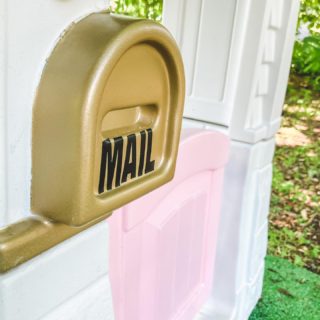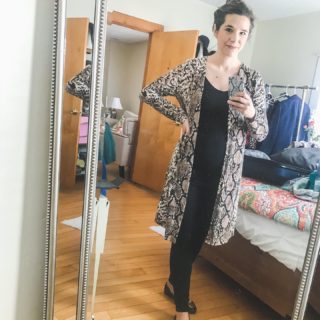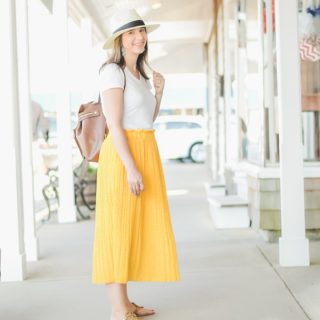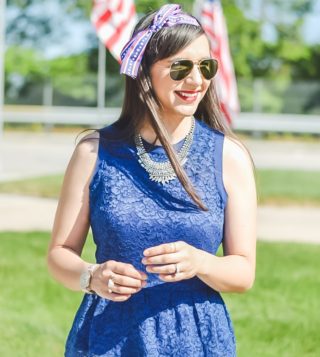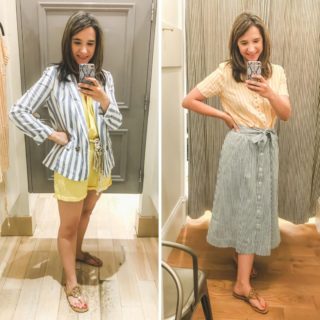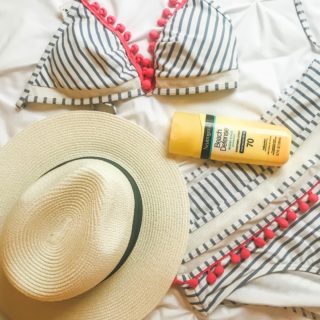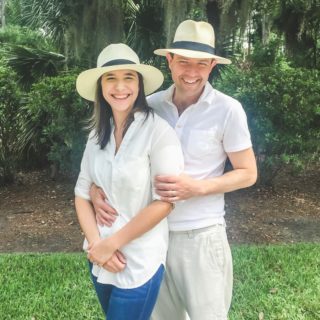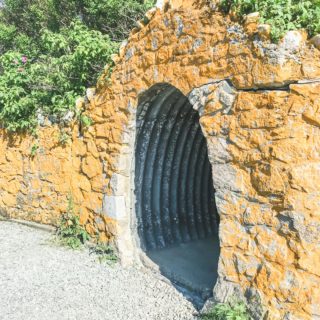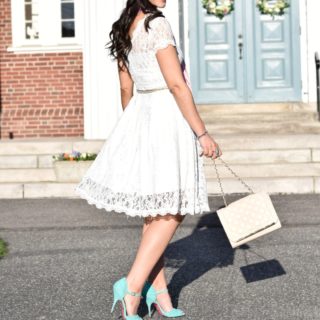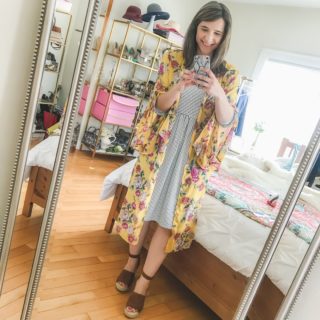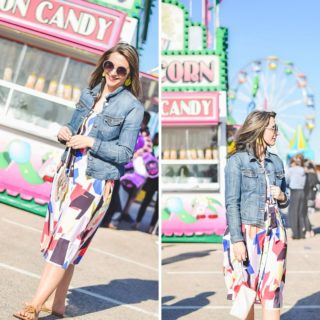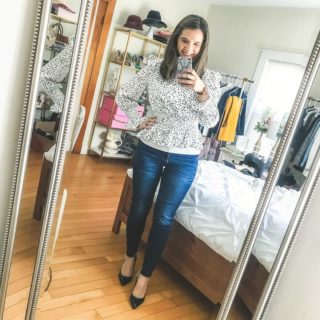Finally, finally, it’s time for the LAST post in my steps to reupholster a chair with two padded back panels. Today we’re handling how to recover a seat cushion.
If you’re new to this series, you can see Part 1 HERE and Part 2 HERE.
When we moved from the West Coast to the East Coast, we left our big furniture behind. After a year without a dining table, my hubby found this solid wood set and I said…hmm…I can do something with that!

Unfortunately, the internet failed me. I spent months scouring the web to figure out how to reattach an upholstered panel to a chair when there are panels on both sides, but hardly anything applicable showed up. In my last post I shared how I reattached those two padded back panels and today all that is left is to reupholster the dining chair seat cushion.
This will be nothing new for many of you, as there are a number of good tutorials on this, but just to show a complete picture of the work it took to redo these dining chairs, I am going to show you how I recovered the dining chair seat cushions.
*This post does contain affiliate links, which means that making a purchase through some of these links will result in a small commission for More to Mrs. E. It doesn’t add to your cost, but it does help support this blog! Thank you! For more information, please see my Privacy Policy.
Materials Needed
- fabric of choice (see 1st post)
- fabric scissors
- seam ripper
- sewing machine
- pins
- staple gun and staples
Reupholstering Dining Room Chairs: Recover the Seat Cushion
This step was one of the more complicated steps. As noted in the first post, I took a picture of the seat cushions before I took them apart. I actually left one intact so I could reference it in this step since there is sewing involved. I will note that it is not necessary to sew, but it did make a more fitted outcome.

Sew together the seat cushion
After I had set one seat cushion aside as reference, I used a seam ripper to take apart the cushion cover so that it could be laid flat and used as a pattern. This was my guide and I traced the pattern on the back of the new fabric as described in the last post.

Using the intact cushion as a guide, I noted which edges would be sewn together.

Then I used some pins to pin those edges together. Remember to make sure the two outward-facing sides of the fabric are touching.


Get out your sewing machine (I actually went to my local library to sew the first few cushions! Can you believe that they have a sewing machine in our maker’s space?!) and sew the edges that you marked.

The more difficult piece was the rounded edge. I sewed carefully, pulled out the pins as I went and made sure that I was keeping the fabric from bunching too much.
Once all the corners are sewed, it’s time to staple it back onto the seat cushion.
Staple the fabric to the Seat Cushion
Fit the fabric over the cushion and staple the fabric to the back like you did for the padded back panels (here), only this time you don’t need to staple the tack strip beneath. These will be reattached with nails through the bottom of the chair.

When you recover the seat cushion, it’s important to make sure that it is a tight fit. To do this, there is an order/method to the stapling process.
Staple all the way around the outside. I started at the back of the cushion and stapled around the fitted edges first. To get the best fit, I pulled the fabric tight so that there were no wrinkles and put one staple on each of the straight edges. (When you let go it may wrinkle, like in the picture below. But it’s ok, that will be fixed when you add the rest of the staples.)

Then, I went back and stapled around those first two staples, pulling the fabric tight as I went.
After stapling around the fitted back edges of the seat cushion, I moved on to the front edge. This will be the most visible part of the seat cushion so I made sure that the entire edge was pulled tight with no wrinkles. I start in the center and work outward towards the edges.

Finally, staple along the left and right sides of the seat cushion.
TIP: If you get to a section where there is barely enough fabric to staple, even when you pull it tight, then use an additional pair of hands (or your own weight) to compress the cushion so that there is more fabric to pull over the edge. Once you release the weight on the cushion, it will just pull the fabric tight.

It’s important, if you do this, that you make sure that you don’t staple it with a wrinkle at the place where you had to add compression.
Once you’ve recovered the seat cushion, find the dust cover that you set aside and staple it back onto the chair.

Set the cushion back on the chair and use the screws you set aside earlier (see first post) to screw the seat back onto the chair!

TIP: Before you hammer or screw any of the pieces back onto the chair, spray them with Scotch Guard and let them dry! This will add an extra layer of protection to your fabric!
The Big Reveal!
Ok! It’s time for the big reveal!!
To remind you what the chairs looked like before….

Here they are now!

And, of course, we need to see the side-by-side!

This was a long project, but not a terribly expensive one. I hope it inspires you to give DIY reupholstery a try! (And if you’re not quite ready for a project the size of this one, check out my post on Easy Reusable DIY projets. There’s an easy project in there using old BBW candle jars. It’s the perfect way to keep all those BBW candles we burn through during the fall and winter from going to waste!)
Thank you so much for stopping by! If this post was helpful to you in any way, please consider pinning it to your DIY project board!

~Virginia
Linking up with: Inspiration Monday | Amaze Me Monday | Craftastic Monday | Inspiration Spotlight | Tips and Tutorials | Too Cute Tuesday | Sew It, Cook It, Craft It | Artsy-Fartsy Link Party | Pretty Pintastic Pinterest Party | Friday at the Fire Station




 Or, one of my other favorite DIY projects that I did on a long weekend was this fun DIY Necklace Holder out of an old frame!
Or, one of my other favorite DIY projects that I did on a long weekend was this fun DIY Necklace Holder out of an old frame!






